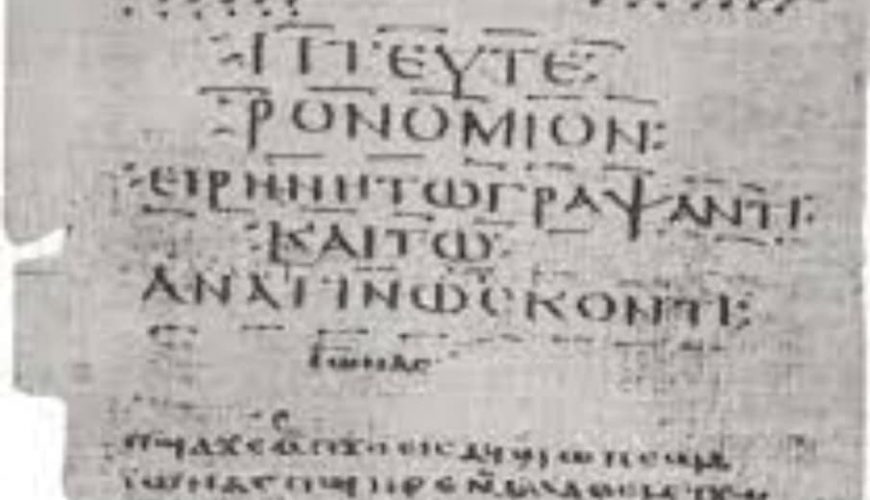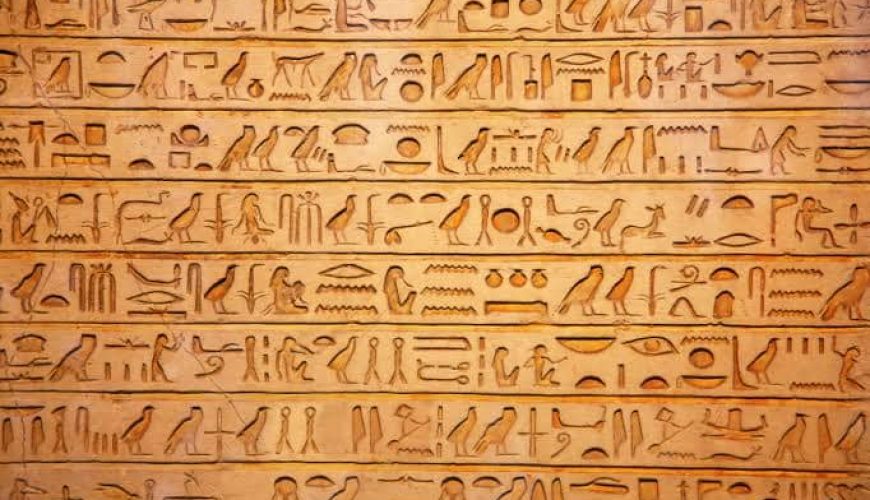The stages of development of the ancient Egyptian language
The ancient Egyptian language passed through several stages in response to the year of development and development, as a result of the long period of time, and changes occurred in the language itself in grammar, morphology, spelling rules, allocations and phonemic values. Specialists in the ancient Egyptian language agreed on dividing the Egyptian language into eras, and specific linguistic characteristics and features characterize each era. Linguistically, these eras are:
1:- The language in the ancient Egyptian era
The scope of this stage can be determined in the period from the First Dynasty to the Eighth Dynasty, especially the first half of it, i.e. this phase of the history of ancient Egypt includes the Archaic period, the First and Second Dynasties, the Old Kingdom, and the Seventh and Eighth Dynasties of the First Intermediate Period. Some linguistic structures distinguish them. We can trace these features in the monuments of the ancient state and the literature of this period, especially religious literature represented in the texts of the pyramids and official and funeral documents and biographies of some people.
2:- Language in the Middle Ages Middle Egyptian
The features of this linguistic stage appeared in the period from the first half of the Eighth Dynasty until the first half of the Eighteenth Dynasty. This stage represented the maturity of the Egyptian language, especially at the grammatical and morphological level, and new linguistic structures appeared that influenced the Egyptian language, and some families from the era of The first transition, the era of the Middle Kingdom, the era of the second transition, and the beginning of the modern state. This period is considered one of the brightest eras of the Egyptian language in terms of its literary heritage.
3:-Language in the late (modern) era.
This linguistic stage appeared since the late eighteenth dynasty and continued until the twenty-fifth dynasty. It was followed in the twenty-sixth dynasty by the revival of the language in its medieval era. This stage was characterized by the emergence of new linguistic and morphological features and the development of linguistic structures and changes in the systems of writing signs.
4:- Demotic stage:
This stage started from the eighth century AD and continued until the fifth century AD and was called the Demotic stage due to the emergence of distinctive linguistic features from texts written in the Demotic (folk) script.
5:- Coptic stage:-
It is the last stage of the ancient Egyptian language, descended directly from the demotic stage around the third century BC. Its first attempts to copy and codify the ancient Egyptian language in the Greek alphabet were turbulent, rough, irregular, and classified. Which was known by the term proto-Coptic, which means the beginnings of the Coptic language, and it officially ended, not actually, with the entry of Islam into Egypt in 640 AD.
We must also pay tribute to another linguistic stage that intervened between the two previous linguistic stages, meaning the language in the Ptolemaic era, which is the one that spread in Egypt during the Greco-Roman occupation and is clearly seen in the Egyptian temples of this period, such as Dendera, Edfu, Asna, Kom Ombo and Philae, and this linguistic stage. It is a continuation in terms of the hieroglyphic line. However, some new signs appeared, and some other signs acquired a different phonetic value from those known in the previous stages.




Comment (0)